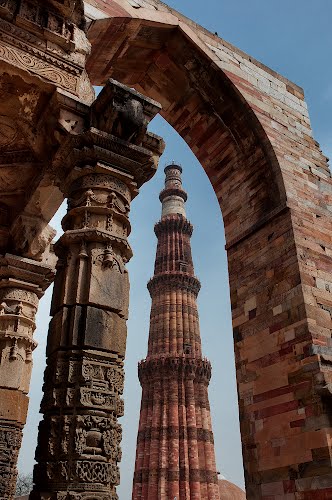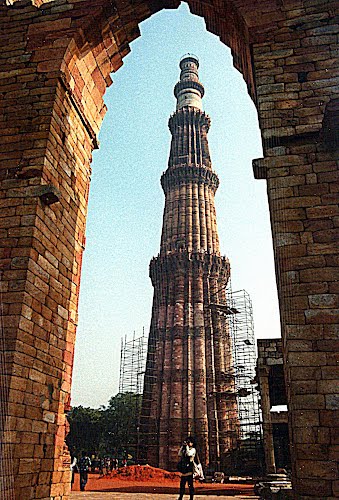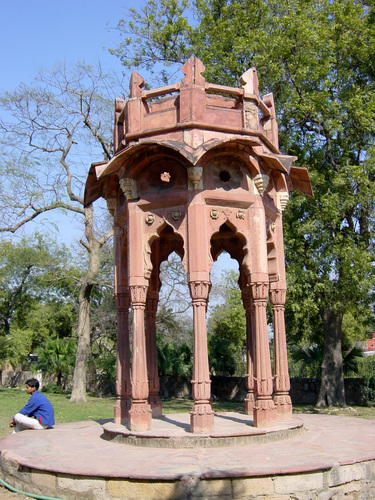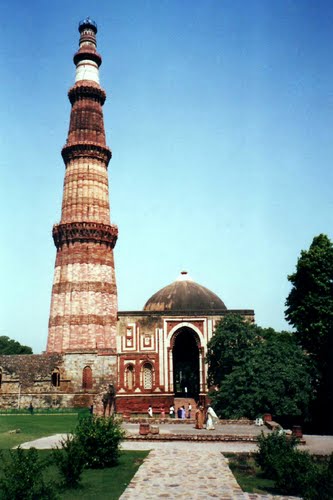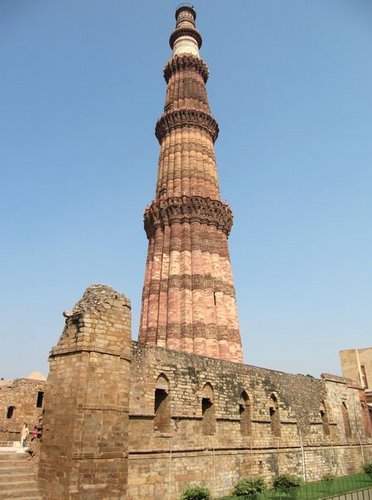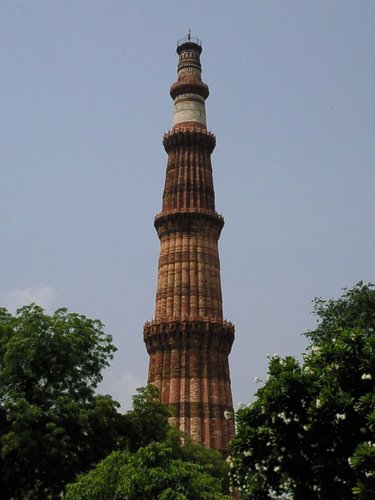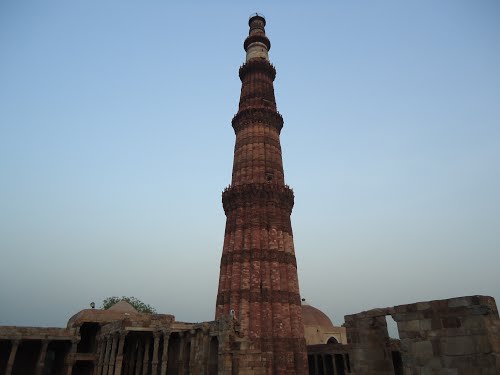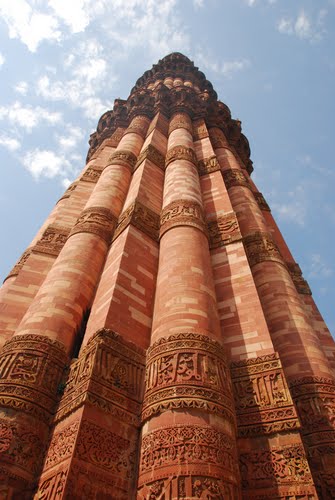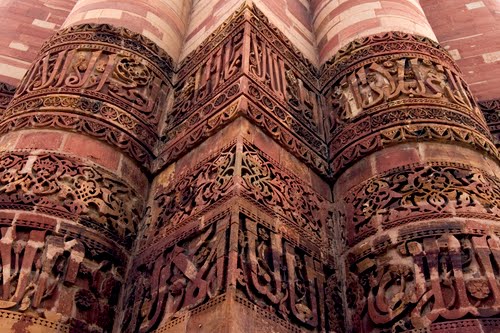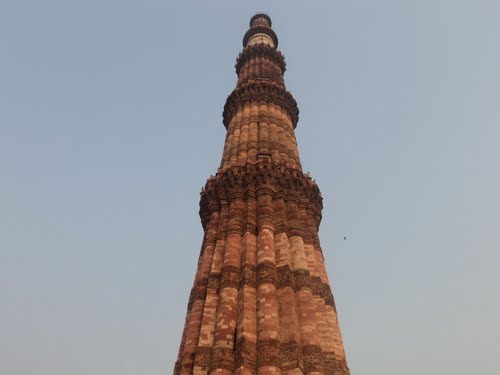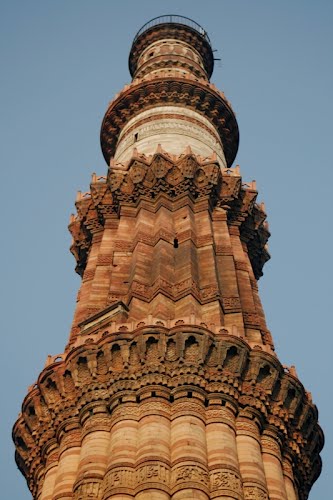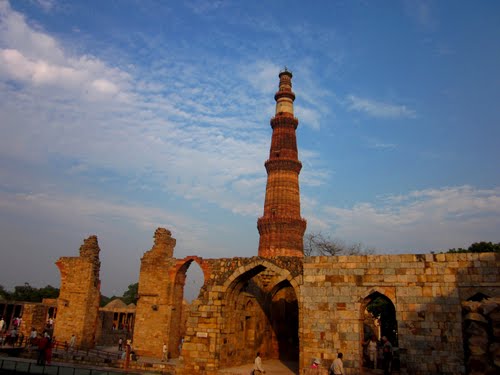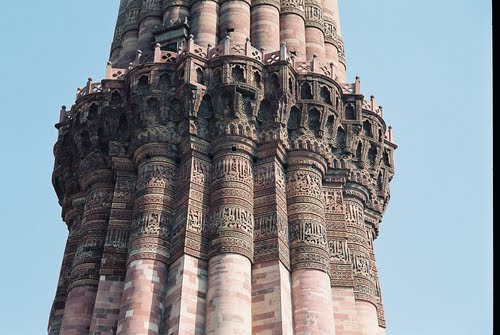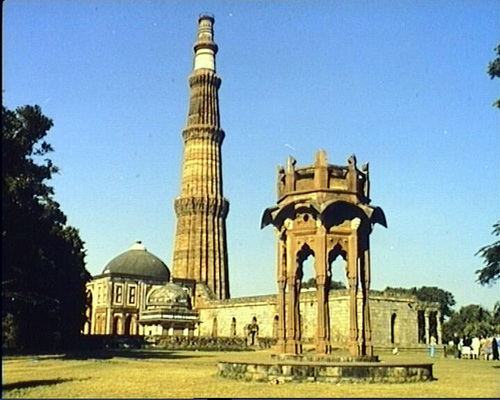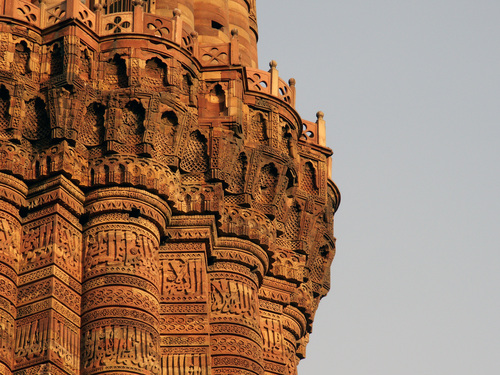Qutub Minar, at 120 meters, is the tallest brick minaret in the world, and the second tallest minar in India after Fateh Burj at Mohali. Qutub Minar, along with the ancient and medieval monuments surrounding it, form the Qutb Complex, which is a UNESCO World Heritage Site. The tower is located in the Mehrauli area of Delhi, India. Made of red sandstone and marble, Qutub Minar is a 73-meter tall tapering tower with a diameter measuring 14.32 meters at the base and 2.75 meters at the peak. Inside the tower, a circular staircase with 379 steps leads to the top. Qutub Minar station is the closest station on the Delhi Metro.
In 1200 AD, Qutub-ud-Din Aibak, the founder of the Delhi Sultanate started construction of the Qutub Minar. In 1220, Aibak's successor and son-in-law Iltutmish added three storeys to the tower. In 1369, lightning struck the top storey, destroying it completely. So, Firoz Shah Tughlaq carried out restoration work replacing the damaged storey with two new storeys every year, made of red sandstone and white marble.
Qutb Minar is surrounded by several historically significant monuments, which are historically connected with the tower and are part of the Qutub Complex. These include the Iron Pillar of Delhi, Quwwat-ul-Islam Mosque, Alai Darwaza, the Tomb of Iltutmish, Alai Minar, Ala-ud-din's Madrasa and Tomb, and the Tomb of Imam Zamin. Other minor monuments include Major Smith's Cupola and Sanderson's Sundial.
History
The construction of Qutub Minar was commissioned by Qutub-ud-Din Aibak, the founder of the Delhi Sultanate in 1199 AD. The minar was built on the ruins of the Lal Kot, the Red Citadel in the city of Dhillika. It and the complex around it used the ruins of 27 Hindu and Jain temples purposefully destroyed in the Islamic incursions. Aibak's successor Iltutmish added three more storeys to complete the tower.
It has not been established with certainty whether Qutub Minar has been named after Qutbu l-Din Aibak, the emperor who commissioned its construction or Qutbuddin Bakhtiar kaki, the famous Sufi saint.
The culture of tower architecture was established in India before the arrival of the Turks. However, there is no evidence on record to confirm that the Qutb Minar was inspired or influenced by earlier Rajput towers. Numerous inscriptions in Parso-Arabic and Nagari characters in different sections of the Qutb Minar reveal the history of its construction. According to the inscriptions on its surface it was repaired by Firoz Shah Tughlaq (1351–89) and Sikandar Lodi (1489–1517).
The Quwwat-ul-Islam Mosque, located to the north of Qutb Minar, was built by Qutbu l-Din Aibak in 1192. It is one of the earliest surviving mosque in the Indian subcontinent. Later, an arched screen was erected and the mosque was enlarged by Iltutmish (1210–35) and Ala-ud-din Khilji.
The topmost storey was damaged by lightning in 1368 A.D. and was rebuilt by Firoz Shah Tughlaq. Firoz Shah Tughlaq built two floors one of which can be distinguished easily as it was built of white marble. In 1505, an earthquake damaged Qutb Minar and the damage was repaired by Sikander Lodi. On 1 August 1903, a major earthquake again caused serious damage to Qutb Minar. Major Robert Smith of the British Indian Army renovated the tower in 1928 and installed a cupola to the top of Qutb Minar. The cupola was later taken down under instructions from Lord Haringe, then Governor General of Pakistan and was installed to the east of Qutab Minar, where it rests now.

